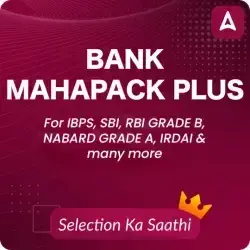The JAIIB exam is conducted by the Indian Institute of Banking and Finance (IIBF) to help banking and finance professionals improve their knowledge and skills. It plays an important role in helping bankers grow in their careers and also offers promotional benefits. The exam covers key topics like the role of finance in the economy, banking services, accounting, financial management, retail banking, wealth management, digital banking, banking technology, and customer service. To prepare well, candidates must understand the JAIIB Syllabus 2026, which explains subject-wise topics and the exam pattern in detail.
JAIIB Syllabus and Exam Pattern 2026
As per the latest updates, the JAIIB 2026 exam consists of four papers- Indian Economy & Indian Financial System, Principles & Practices of Banking, Accounting & Financial Management for Bankers, and Retail Banking & Wealth Management. Each paper includes 100 objective-type questions to be completed in 2 hours. There is no negative marking, and the exam is conducted in online mode. Candidates must secure at least 50 out of 100 marks in each paper to qualify. Understanding the updated structure and section-wise syllabus is essential for focused preparation.
JAIIB Syllabus 2026: Overview
Before starting their preparation, candidates should first understand the JAIIB Syllabus and Exam Pattern 2026, as it helps them know the type and nature of questions asked. The exam is conducted online by the Indian Institute of Banking and Finance (IIBF) and is held twice a year for banking professionals. Only IIBF members can apply. Below we have the overview of the JAIIB Syllabus 2026.
| JAIIB Syllabus 2026 | |
| Conducting Body |
Indian Institute of Banking and Finance (IIBF)
|
| Exam Name | JAIIB 2026 |
| Eligibility |
IIBF Members Only
|
| Subjects |
1. Indian Economy & Financial System
2. Accounting & Financial Management 3. Principles & Practices of Banking 4. Retail Banking & Wealth Management |
| Total Marks | 400 |
| Time Duration |
2 hours for each subject
|
| Negative Marking | No |
| Passing Marks |
50 out of 100 per subject
|
| Exam Mode | Online |
| Official Website | |
JAIIB Exam Pattern 2026
The JAIIB Exam 2026 tests a candidate’s knowledge of banking through four subjects: Indian Economy & Financial System (IE & IFS), Principles & Practices of Banking (PPB), Accounting & Financial Management (AFM), and Retail Banking & Wealth Management (RBWM). Each subject is divided into modules covering important topics in detail. The exam is online, with 100 multiple-choice questions per paper, each worth 1 mark, and a time limit of 2 hours. This paper-wise structure helps candidates get tested on all key areas of banking.
| JAIIB Exam Pattern 2026 |
|||
| Papers | No. of Questions | Total Marks | Duration |
| Indian Economy and Indian Financial System | 100 | 100 | 2 Hours |
| Principles and Practices of Banking | 100 | 100 | 2 Hours |
| Accounting and Financial Management for Bankers | 100 | 100 | 2 Hours |
| Retail Banking and Wealth Management | 100 | 100 | 2 Hours |
IIBF JAIIB Syllabus 2026 Download PDF
To prepare effectively for the JAIIB Exam 2026, having a clear understanding of the latest syllabus is essential. A well-structured syllabus acts as a roadmap, helping aspirants focus their efforts on the right topics and avoid unnecessary distractions. To assist candidates in their preparation journey, we’ve provided a direct PDF link to the official IIBF JAIIB Syllabus 2026, ensuring that every subject and module is covered systematically. Studying in alignment with the prescribed syllabus maximise efficiency and boosts confidence ahead of the exam.
JAIIB Syllabus 2026-Click Here To Download PDF
Some Important Facts about JAIIB Syllabus 2026
Here are critical facts about the JAIIB Syllabus 2026 to guide your preparation:
| Feature | Details |
| Papers |
4 compulsory: IE & IFS, PPB, AFM, RBWM
|
| Modules | Each paper has 4 modules (A–D) |
| Focus Areas |
RBI rules, Banking laws (FEMA, COPRA), loan & NPA management
|
| Marking Scheme |
100 MCQs per paper, no negative marking
|
| Language |
English & Hindi (except language-based parts)
|
| Passing Marks |
50 out of 100 per paper (no aggregate)
|
| Exam Attempts | 4 per year; clear all in 2 years |
| Exam Frequency | Twice a year (May & November) |
| Syllabus Updates |
Reviewed annually as per new regulations
|
JAIIB Syllabus 2026
As per the changes made by IIBF, the JAIIB Syllabus 2026 comprises 4 compulsory subjects. Aspirants should have a thorough and deep knowledge of the JAIIB Syllabus so that not a single topic is left behind.
Paper 1: Indian Economy and Indian Financial System (IE & IFS)
Paper 2: Principles and Practices of Banking (PPB)
Paper 3: Accounting and Financial Management for Bankers (AFM)
Paper 4: Retail Banking and Wealth Management (RBWM)
JAIIB Paper 1: Indian Economy and Indian Financial System (IE & IFS)
The first paper of JAIIB Syllabus 2026 is the Indian Economy and Indian Financial System. There are four modules in the JAIIB Paper 1 Syllabus: Indian Economic Architecture, Economic Concepts Related to Banking, Indian Financial Architecture, and Financial Products and Services. Here, we have provided the topics of each module.
| Module | Main Topics Covered |
| Module A: Indian Economic Architecture | – Overview of Indian Economy: Evolution, characteristics, history (pre-British, till/after 2008), structural changes – Economic Planning: Meaning, history, types, objectives, achievements, 5-year plan funding – Sectors: Primary, Secondary, Tertiary, Quaternary, Quinary, revolutions, sector comparison, GDP share, employment, sunrise sectors, organized/unorganized – Priority Sector & MSME: Definitions, lists, lending norms, MSME role & contribution, recent MSME schemes like Atmanirbhar Bharat, Make in India – Infrastructure & Social: Types (energy, power, transport), social sector (health, education, family welfare) – Globalisation: Impact, advocacy, pros/cons, protectionism – Economic Reforms: Overview, real/financial/global changes, reforms in India – Foreign Trade/Investments: Policies, FDI/FII, trends, challenges, economic growth vs. development – International Organisations: World Bank, IMF, WTO, regional groups, recent issues – Climate Change & SDGs: Sustainable development, global & Indian progress, CSR – Issues: Poverty, inequality, jobless growth, migration, pandemic impacts, remedies |
| Module B: Economic Concepts Related to Banking | – Basics: Introduction, micro & macroeconomic concepts, types of economies (market/command/mixed) – Supply & Demand: Demand/supply curves, shifts, price & quantity effect – Money & Inflation: What is money, how supply works, inflation causes & measures – Interest Theories: Classical, Keynesian, IS-LM model, demand curves – Business Cycles: Features & phases – Monetary/Fiscal Policy: Tools, FRBM Act, Indian response to global crises – National Income/GDP: Calculation methods, importance – Union Budget: Receipts, spending, deficits |
| Module C: Indian Financial Architecture | – Financial System: Meaning & phases, Narasimham Committee, banking reforms, present status – Banking Structure: Types (commercial, rural, cooperative, payment/small finance/NBFCs), RBI rules – Banking Laws: Key sections from RBI Act (1934), Banking Regulation Act (1949) – Development Finance: Evolution, DFI objectives, types (IFCI, ICICI, IDBI, SIDBI, EXIM, NABARD, NHB, NaBFID) – Microfinance: History, Grameen model, SHG-Bank linkage, regulations, RBI directions – NBFCs: Role, evolution, inclusive growth, types, regulation, fair practice, ombudsman, SBR guidelines – Insurance: Development, privatization, FDI, penetration, intermediaries, legislation, reinsurance – Regulators: Roles of RBI, SEBI, IRDA, PFRDA – Banking Reforms: Bad banks, infra financing, NaBFID, EASE initiative |
| Module D: Financial Products and Services | – Financial Markets: Types (money, capital, forex), structure, price discovery – Money & Capital Markets: Call/notice/term money, T-bills, CDs, CPs, repo, LTRO, bonds, corporate debt – Capital Markets: Stock exchanges, regulators, product types, ASBA, QIP, intermediaries – Forex: Features, participants, FEMA, ADR/GDR, LIBOR/ARR – Market Interconnections: Reasons, dynamics, integration, Asian Clearing Union, contagion effect – Merchant Banking: Function, history, comparison, SEBI rules, activities – Derivatives: Meaning, history, types (futures, options, swaps, CDS), RBI guidelines, ISDA – Factoring/Forfaiting/TReDS: Meaning, differences, process, fees, advantages, TReDS operations – Venture Capital: Concept, evolution, stages, regulation, exit routes – Leasing & Hire Purchase: Types, benefits, legal aspects, leasing vs. hire purchase – Credit Ratings: Agencies, history, process, symbols, outlook, regulations, CICs – Mutual Funds: Types, roles, NFO, risk, expenses, investment strategies, alternative funds – Insurance Products: Principles, types, government & group schemes, microinsurance, ombudsman – Pension Funds: EPF, PPF, NPS, APY, annuities – Para Banking: Types & organization, commission disclosure – REITs & InvITs: Meaning, types, benefits, taxation, regulations |
JAIIB Paper 2: Principles and Practices of Banking (PPB)
Principles and Practices of Banking is the second paper for JAIIB Syllabus. PPB comprises four modules, General Banking Operations, Functions of Banks, Banking Technology, and Ethics in Bank and Financial Institutions. Here, we have listed down the module-wise topics for Paper 2.
| Module | Main Topics Covered |
| Module A: General Banking Operations | – Banker-Customer Relationship: What a bank is, types of relationships (trustee, bailee, agent, lessor, indemnifier), types of deposit accounts, customer services – AML-KYC Guidelines: Money laundering risks, KYC policy, PMLA, risk management, FATF, reporting duties – KYC Operations: KYC rules, wire transfers, Central KYC, transaction monitoring – Account Opening: Rules for personal & other accounts, opening current accounts, legal entity identifiers – Deposit Account Operations: Features of accounts, interest, inoperative/unclaimed accounts, joint accounts, nominations, attachments – Clearing/Cash Handling: Cheque Truncation, RBI rules, cash custody and ATMs – Special Banker Relationships: Mandates, Power of Attorney, Lien, Right of set-off/appropriation – Forex and NRI Banking: FEMA basics, NRI/PIO account operations, remittances, property rules – Cash Management: Types, uses and challenges in cash management – Cheque Collection/Payment: Negotiable Instruments Act, payments, dishonours, cheques system – Banker/Customer Responsibilities: Bank’s payment/collection duties, secrecy, care, customer rights – Ancillary Services: Remittance types (DD, NEFT, RTGS), digital payments, lockers, merchant banking, government business – Financial Inclusion & Literacy: Efforts to expand banking, financial literacy training – Customer Service: Service guidelines, ATM/counter service, security, branch policies – Grievance Redressal & Ombudsman: Handling complaints, the RBI Ombudsman scheme – Consumer Protection & RTI: Consumer Protection Act 2019, RTI Act 2005 basics, definitions, rights, complaint process |
| Module B: Functions of Banks | – Lending Principles: How banks lend, borrower types, credit facilities (working capital, term loans, NFB facilities) – Credit Appraisal & Assessment: How loans are analyzed and approved – Loan Operations: Interest, credit management, documentation, recovery agents – Collaterals: Types and uses of securities for loans – Charging Securities: Types of charges (pledge, hypothecation, mortgage), registration – Documentation: Types and process – NPAs/Stressed Assets: What are NPAs, asset classification, provisioning, NPA recovery mechanisms – Recovery Laws: DRB Act, SARFAESI, IBC, Limitation Act – Indemnity & Guarantee: Contract basics, features and rights – Bank Guarantees: Types, issuance, payment precautions – Letters of Credit: Parties, types, documents, international standards – Deferred Payment Guarantee: Use and payment process – Bill Finance: Types of bills, legal position – Retail Loans: Credit card, home, personal and consumer loans – Priority Sector Lending: Targets, categories, rules, guidelines – Agricultural Finance: Kisan Credit Cards, crop loans, agri insurance – MSME & NBFC Finance: MSME policy, co-lending, government schemes, performance rating, TReDS – Government Schemes: DAY-NRLM, PMJDY, MUDRA, KVIC – Self-Help Groups: Definition, need, formation, government linkage |
| Module C: Banking Technology | – Computerisation: Banking networks, UPS, core banking, data warehousing/mining – CBS Operations: Functions, transaction flow, EOD/BOD, security & password management – Digital Banking: ATMs, e-banking, customer protection, failed transaction compensation – Data Networks & EFT: Network trends, SWIFT, NEFT, RTGS – Digital Payments: NPCI, government digital drives – Technology Impact: IT in banking, global trends, emerging tech – Security & Mitigation: Threats, audits, fraud risk, cyber security, IT law framework – Cybercrime in Banking: Incident response, online frauds – New Technologies: e-RUPI, fintech, regtech, suptech, social media/hashtag banking, open banking |
| Module D: Ethics in Banks and Financial Institutions | – Ethics Overview: What are values, ethics and business ethics, ethics in banking (trust, professionalism), lessons from past scams – Individual Ethics: Personal values vs business ethics, how to handle ethical dilemmas – Employee Ethics: Abuse of position, discrimination, handling conflicts, ethics ambassadors – Work Ethics: What is it, examples of (un)ethical behaviours, whistleblowing – Banking Ethics Trends: Tech and data ethics, privacy, IPR, information security in banks |
JAIIB Paper 3: Accounting and Financial Management for Bankers (AFM)
Paper 3 of the JAIIB Syllabus 2026 is Accounting and Financial Management for Bankers. Accounting principles and processes, financial statements & core banking systems, financial management, and taxation & fundamentals of costing are the modules that an aspirants have to study for AFM. Here, candidates can check the topics of each module.
| Module | Main Topics Covered |
| Module A: Accounting Principles and Processes | – What is Accounting: Meaning, scope, history, main principles, Indian and world standards (GAAP, IFRS) – Basic Accountancy: Double entry, going concern, conservatism, revenue recognition, accrual vs cash accounting – Books & Ledgers: Cash books, how to record entries, debits/credits, journals – Bank Reconciliation: Why passbook and cashbook differ, how to reconcile, steps in preparing BRS – Trial Balance & Errors: What is a trial balance, finding and fixing errors, adjusting and closing entries – Depreciation: Why assets lose value, methods (straight line, WDV, units of production), journal entries – Capital vs Revenue: Difference between capital and revenue expenditure/receipts – Bills of Exchange: Types, due dates, important terms, accounting steps – Bank-Specific Accounting: Bank’s own peculiarities, special systems, sample entries – Back Office & Unreconciled Entries: What back office handles, how banks reconcile inter-branch entries – Bank Audit: Types (concurrent, internal, statutory), role and purpose |
| Module B: Financial Statements and Core Banking Systems | – Balance Sheet Equation: Assets = Liabilities + Equity, how to compute – Making Final Accounts: Preparing statements from trial balance, adjustments – Company Accounts I: Company vs partnership, shares, issue, non-voting shares – Company Accounts II: Balance sheet specifics, effect of Ind AS – Cash Flow & Funds Flow: Difference between cash and funds flow, statement formats – Bank Final Accounts: Special requirements for banks, profit/loss account, how banks make their balance sheet, RBI & Basel-III disclosure rules – Computerised Accounting: Manual vs computerised, terms, features, pros/cons, functions, info security – Core Banking: Components, scope of computerisation, impact on banks, internet’s influence |
| Module C: Financial Management | – Basics: Types of business, financial decision areas, aims/goals of financial management, risk vs return, finance and ethics – Ratio Analysis: What are accounting ratios, types and uses, calculating and interpreting for different users – Interest & Annuities: Simple/compound interest, fixed/floating rates, annuities and their future/present value, debt repayment calculations – Yield to Maturity (YTM): Understanding bonds, types, how to calculate bond yield, duration, price changes – Forex Arithmetic: Basics of forex, Indian market, exchange rates, forward rate logic – Capital Structure & Cost: Capital structure meaning, leverage, debt vs equity, theories, cost of capital, how to calculate and choose best mix – Capital Investment Decisions: Appraisal methods, what’s a term loan, project finance basics – Leasing: What is lease finance, types, legal aspects, how it’s booked – Working Capital: Cycle, advances, management techniques, different short-term finances, factoring/forfaiting – Derivatives: What are derivatives (forwards, options, swaps), their use, basics |
| Module D: Taxation and Fundamentals of Costing | – Taxation: Basics of Income Tax Act, TDS/TCS, tax returns, refunds, and recoveries – Goods & Services Tax: Direct vs indirect taxes, intro to GST – Cost & Management Accounting: What is cost accounting, why it matters, elements/types of cost, cost standards, how it helps managers – Costing Methods: Unit/output costing, job/batch/contract costing, service costing, what’s included in each – Standard Costing: Setting cost standards, variance analysis for materials/labour/overhead – Marginal Costing: What it means, advantages, breakeven analysis, PV ratio, margin of safety, absorption costing, how it differs – Budgets: Purpose, types (fixed/flexible), how budgets are made and monitored, zero based/programme/performance budgeting |
JAIIB Paper 4: Retail Banking and Wealth Management (RBWM)
Retail Banking and Wealth Management is a new paper added to the JAIIB Syllabus. In this paper modules mentioned are the following: Retail Banking, Retail Products and Recovery, Support Services-Marketing of Banking Services/Products, and Wealth Management. To know the topics, aspirants should refer below.
| Module | Main Topics Covered |
| Module A: Retail Banking | – Introduction: Features, advantages, limits, history, conditions for success, challenges, future of retail banking – Role in Bank Operations: Business models and importance – Retail vs Corporate Banking: Key differences – Branch Profitability: How profit is calculated, types of profits (gross, operating, net), ROA, ROE, factors and strategies to improve branch and banking profitability |
| Module B: Retail Products and Recovery | – Customer Needs: What customers want, Maslow’s theory, service quality – Product Development: How banks develop and manage products, deposit and loan (asset) products, fee-based services, new product process – Credit Scoring: What is a credit score, models, good/bad, score management, issues/mistakes – Retail Liability Products: Current, savings, fixed and recurring deposits—features, benefits, documents, opening and closure – Retail Asset Products: Home, auto, personal, education, and other retail loans—processing and features – Cards: Credit, debit, charge, pre-paid, co-branded, contactless cards – Remittance: NEFT, RTGS, ECS, NACH, AePS, BBPS—key features – Digitisation: Technology in banking, user-friendly features, digital lending, networks like INFINET, NFS, IBCC – AI and Tech: What is AI, automation, benefits/challenges in retail banking, Indian scenario – Retail Loan Recovery: Repayment, defaults, NPA monitoring, SARFAESI, DRT, Lok Adalat, direct recovery agents – Management Information Systems (MIS): Concepts, role, design issues and solutions – Securitisation: Basics of asset securitisation |
| Module C: Support Services – Marketing of Banking Services/ Products | – Marketing Basics: What is marketing in banks, the marketing mix – Delivery Channels: Physical branches, ATMs, PoS, mobile/internet banking, liability for unauthorised transactions – Delivery Models: Staff, marketing managers, DSAs, tie-ups – Customer Relationship Management (CRM): Importance and process in banks, how it helps satisfaction – Service Standards: Codes of commitment, BCSBI, code compliance, grievance redressal – Marketing Information Systems: What MKIS is, components and use, decision models, computer use, system evaluation |
| Module D: Wealth Management | – Wealth Management: What it means, business structures, products (alternative assets, bonds, mutual funds, insurance, real estate), planning, wills, private banking, importance and benefits – Investment Management: Basics, steps, investment banking, differences between portfolio management and investment banking, types of portfolio management, recent developments – Tax Planning: Indian tax structure, income tax terms, tax regimes, investment for tax saving, estate/will planning, capital gains – Other Financial Services: Third-party product distribution, mutual funds, insurance, social security insurance, depository and agency services, portfolio management, factoring |
| Related Posts: | |
| JAIIB Salary | JAIIB Study Material 2026 |
| JAIIB Previous Year Papers | JAIIB Exam Preparation Tips |
| JAIIB Mock Test | JAIIB Online Course |

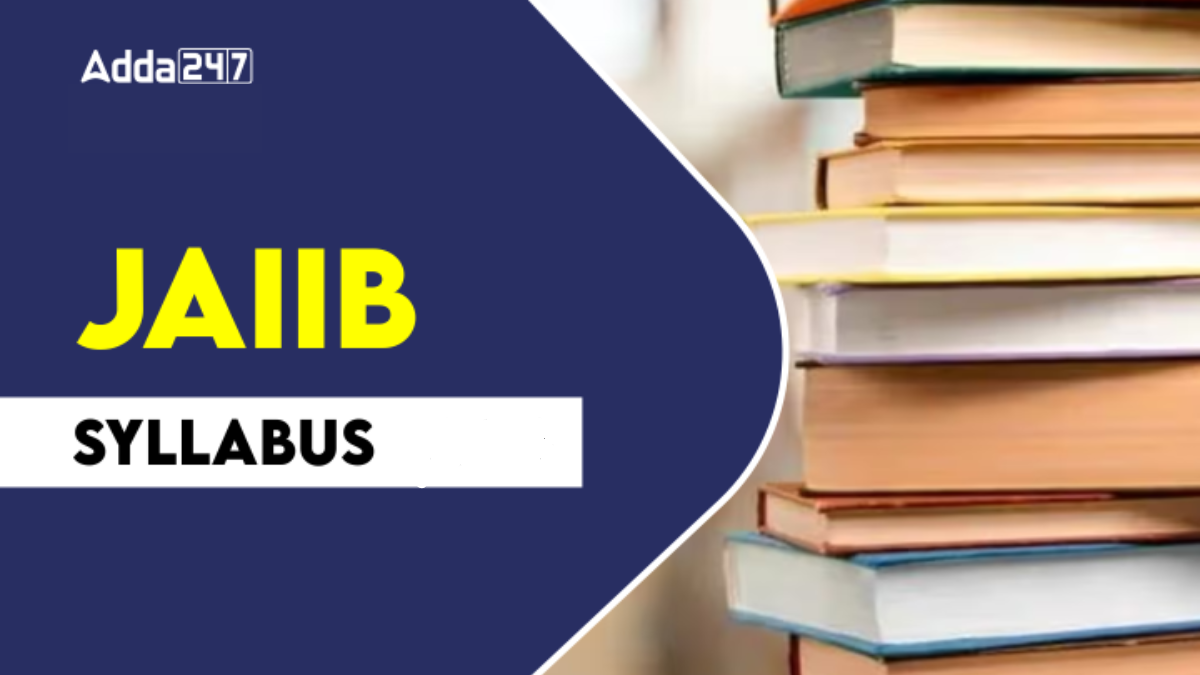

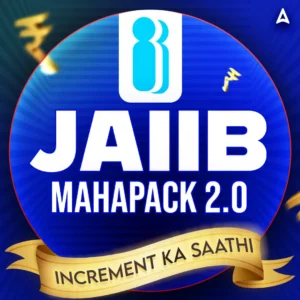

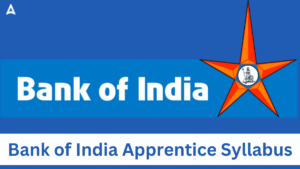 Bank of India Apprentice Syllabus 2026 a...
Bank of India Apprentice Syllabus 2026 a...
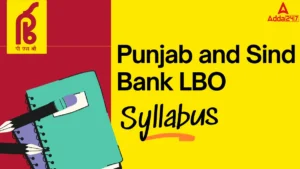 Punjab and Sind Bank LBO Syllabus and Ex...
Punjab and Sind Bank LBO Syllabus and Ex...
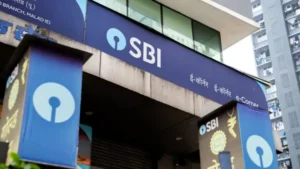 SBI Clerk Syllabus 2026 and Exam Pattern...
SBI Clerk Syllabus 2026 and Exam Pattern...

